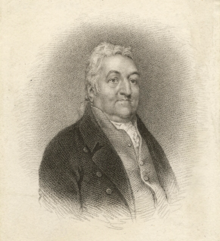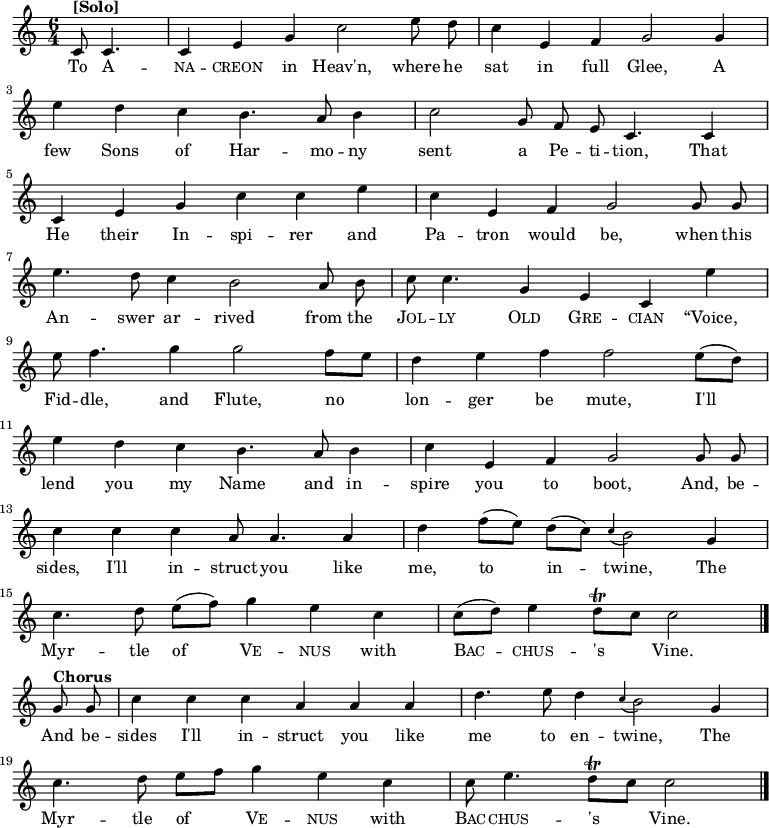
"The Star-Spangled Banner" is the national anthem of the United States. The lyrics come from the "Defence of Fort M'Henry", a poem written on September 14, 1814, by 35-year-old lawyer and amateur poet Francis Scott Key after witnessing the bombardment of Fort McHenry by British ships of the Royal Navy in Outer Baltimore Harbor in the Patapsco River during the Battle of Baltimore in the War of 1812. Key was inspired by the large U.S. flag, with 15 stars and 15 stripes, known as the Star-Spangled Banner, flying triumphantly above the fort during the U.S. victory.

"My Country, 'Tis of Thee", also known as simply "America", is an American patriotic song, the lyrics of which were written by Samuel Francis Smith. The song served as one of the de facto national anthems of the United States before the adoption of "The Star-Spangled Banner" as the official U.S. national anthem in 1931. The melody used is adopted from the national anthem of the United Kingdom, "God Save the King".
A national anthem is a patriotic musical composition symbolizing and evoking eulogies of the history and traditions of a country or nation. The majority of national anthems are marches or hymns in style. American, Central Asian, and European nations tend towards more ornate and operatic pieces, while those in the Middle East, Oceania, Africa, and the Caribbean use a more simplistic fanfare. Some countries that are devolved into multiple constituent states have their own official musical compositions for them ; their constituencies' songs are sometimes referred to as national anthems even though they are not sovereign states.
A lyricist is a writer who writes lyrics, as opposed to a composer, who writes the song's music which may include but not limited to the melody, harmony, arrangement and accompaniment.
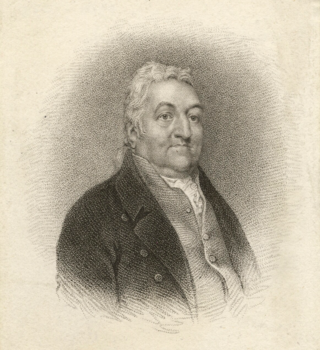
John Stafford Smith was a British composer, church organist, and early musicologist. He was one of the first serious collectors of manuscripts of works by Johann Sebastian Bach.
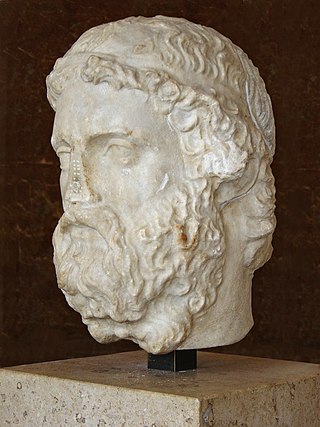
Anacreon was a Greek lyric poet, notable for his drinking songs and erotic poems. Later Greeks included him in the canonical list of Nine Lyric Poets. Anacreon wrote all of his poetry in the ancient Ionic dialect. Like all early lyric poetry, it was composed to be sung or recited to the accompaniment of music, usually the lyre. Anacreon's poetry touched on universal themes of love, infatuation, disappointment, revelry, parties, festivals, and the observations of everyday people and life.

The Anacreontic Society was a popular gentlemen's club of amateur musicians in London founded in the mid-18th century. These barristers, doctors, and other professional men named their club after the Greek court poet Anacreon, who lived in the 6th century B.C. and whose poems, "anacreontics", were used to entertain patrons in Teos and Athens. Dubbed "the convivial bard of Greece", Anacreon's songs often celebrated women, wine, and entertaining.
In the course of the adoption of "The Star-Spangled Banner" as the national anthem of the United States, a variety of people have either sung or performed the anthem using a variety of instruments and methods. Some of these methods include using only one instrument, such as a guitar or trumpet. Other methods have included singing the anthem using different vocal ranges or even changing some of the words to show support for a home team or for an event. However, veterans groups have spoken out on occasion about these recordings, mainly calling them disrespectful to the country and to the anthem.
In music, a catch is a type of round or canon at the unison. That is, it is a musical composition in which two or more voices repeatedly sing the same melody, beginning at different times. Generally catches have a secular theme, though many collections included devotional rounds and canons.
Richard John Samuel Stevens was an English composer and organist.
The Holliday Street Theater also known as the New Theatre, New Holliday, Old Holliday, The Baltimore Theatre, and Old Drury, was a historical theatrical venue in Federal Period Baltimore, Maryland. It is known for showing the first performance of Francis Scott Key's "The Star-Spangled Banner".
Thomas Carr was an American music publisher, composer, and organist. He was the son of Joseph Carr and the brother of Benjamin.

Robert Treat Paine Jr. was an American poet and editor. He was the second son of Robert Treat Paine, signer of the Declaration of Independence. Born Thomas Paine, he changed his name to that of his recently deceased older brother in 1801, in part as a tribute to his father and in part to avoid confusion with the more famous Thomas Paine, the revolutionary pamphleteer, who was unpopular at that time. He received bachelor's and master's degrees from Harvard University, for whose commencement ceremonies he wrote a number of pieces.
Robert Broderip was an English organist and composer.
"Adams and Liberty" is considered the first significant campaign song in American political history, and served to support incumbent Federalist John Adams in the 1800 United States presidential election.

The Kensington Club is a private all-male dining club for students of the University of St Andrews.
Ralph Tomlinson, was a British lyricist best known for writing the original lyrics to "The Anacreontic Song". The music from the Anacreontic Song would be set as the music for The Star Spangled Banner, which would become the American national anthem in 1931. In 1776, he became the President of the Anacreontic Society, after the death of the previous President, George Bellas.
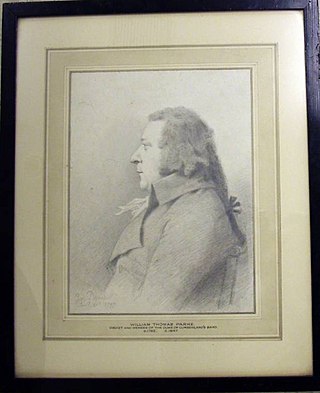
William Thomas Parke was an English oboist and composer. He played in notable concerts of the day; in retirement he published Musical Memoirs.


